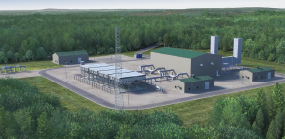The nuclear power industry, along with the rest of the North American utility industry, is moving to a highly competitive, price-driven environment. Often perceived as a monolith, in this industry, like others, there are winners and losers. Despite very impressive improvements in O&M costs and output in recent years, the study found that among the 54 sites that are top or good performers, 20 are vulnerable to shutdown because projected annual production costs are higher than projected prices in the market. In addition, 17 sites that have a poor performance record over the past several years are vulnerable to shutdown, again because production costs are higher than the market price each will face. Some of these sites may be able to improve performance and survive.
These 37 sites represent 40 percent of the nuclear generating capacity in the United States, providing just over 40,000 megawatts (mW) of generating capacity that produced nearly 250,000 megawatt hours (mWh) of electricity annually in the 1993 to 1995 time period. The need for additional capacity is of interest to the gas industry because of the potential market for natural gas. If all 37 sites close down, there would be opportunities for up to 1.55 trillion cubic feet (tcf) of natural gas use per year in electricity generation, which is equivalent to approximately 45 percent of the natural gas used for electricity generation in 1995. Realistically, increased demand for gas would be lower since improved efficiency in the electric industry will reduce the need for a one-to-one replacement and will compete against other facilities.
Important regional concentrations are evident in nuclear site shutdown. The vast majority is in the Northeast and Midwest, where 1.16 tcf of the total gas potential is found. Including the Southeast, north of Florida, adds another 0.2 1 tcf of potential.
These sites are vulnerable to shutdown because the market price each is likely to face in their particular region will be less than their annual production costs, even if prices remain level-which most experts believe is unlikely. The study looks only at actual operating costs and assumes stranded cost recovery and other means of reducing corporate debt are not direct factors in affecting the shutdown decision on individual plants. Of course, poor corporate performance may negatively affect nuclear facilities.
Besides economic performance and market competition, a number of other external dynamics were analyzed to determine if they would affect shutdown. These include shortage of capacity for on-site storage of nuclear waste, the need to renew the NRC license, decommissioning requirements, and low safety performance as rated by NRC. When combined with other problems, these may lead an owner to shut down a facility. However, none of these in isolation is likely to force the decision.



